Visitors here could be excused for assuming that the Paleochora Gorge begins somewhere above our small town, and ends some distance later at the Libyan Sea. But wrong – it’s on the island of Kythira, some 80 km NW of Crete, and a short distance from the Greek mainland (Peloponnese). An enjoyable week on Kythira last autumn easily tempted us to return in late May this year to explore further, and include a descent of the Paleochora, or more accurately the Kakia Lagada Gorge.
Reading of its difficulty, with climbing equipment required and several abseils or rope-lowers necessary, we thought it advisable to use a guide to take us down, and found Nikos through www.pyrgoshouse.com “Meet Nikos outside the bakery in Potamos,” we were informed, “he will have all the equipment, you drive to the start with him, descend the gorge, and the mini-bus will meet you at the end, by the sea ; bring water and swimming things, have a great day.”
Meeting at 3pm, Nikos (the town’s baker, it transpired) drove us the short distance to Paleochora, once the island’s capital, and now in ruins. Some history : built in the 12thC by Monemvassians from the Peloponnese, and then known as Agios Dimitrios, the fortress stood above two precipitous ravines, invisible from both the sea and inland, was home to some 800 inhabitants during Byzantine times, and was totally secure. Until 1537, when the Turkish pirateer Barbarossa (who destroyed our own Castelli Selino in 1539) ransacked the city and massacred most of the male population. It was never again occupied.
If you come here at dusk, as the sun sets, as we did last year, there’s an almost tangible sombre and melancholy atmosphere. It’s said that as night falls, you can hear the cries and wailing of women and children (hiding in caves) as they lament the loss of their men-folk, or maybe it’s just the wind soughing through the rocks and walls of this long-abandoned city …..
Back to our expedition. Fitted with climbing harnesses (helmets optional), Nikos led us past Agia Barbara church, one of fifteen which once stood here, and on a steep path down into the gorge. For some twenty minutes we followed the boulder-strewn riverbed, past the junction of the two canyons, until Nikos stopped on a ledge above a vertical wall of c.5 metres and began to unpack the rope.
In excellent English, he explained how he would lower us down one at a time, that anyone with experience could abseil, and to have total confidence in him. So down we all went, the first I think of ten or more such drops, the longest maybe 10m. Above each were ‘abseil rings’ bolted into the rock, and I noted that Nikos tied into minimum of two on each occasion, before finally, when we were all safely below, looping a doubled rope through and abseiling down himself.
With so many twists and turns, it’s hard to guess the length of the gorge; Nikos estimated it as around 4km, and it was certainly no longer, probably less. Inevitably our progress was slow, with time to encourage and take photos of friends as they disappeared over the edge, whilst nervously waiting for our own turn, to replenish our water intake, then repeat the process a few minutes later. Time too, to appreciate the sheer-sided walls of the gorge, and try to imagine horrific events here almost five hundred years ago.
It took nearly four hours to reach the sea, having descended some 200m height from Paleochora, though it seemed far more. A “sting in the tail” was a small “limni” or sea-lake, requiring delicate footwork on rocks above it, to avoid a fall into it …
In the cool of a May evening the sea looked less than inviting, so with our transport waiting, we took a unanimous (and much better) decision to drive up the coast to Agia Pelagia, where we celebrated our successful descent of the Paleochora Gorge with ice-creams all round.
Footnote: Kythira is usually accessible by ferry from Kastelli-Kissamos, a 4-hour voyage with Lane-Sea Ferries, but major problems this summer resulted in the schedule being cancelled for long periods. Aegean Air and Sky Express operate daily (seasonal) flights from Athens, but there is no direct service from Crete.

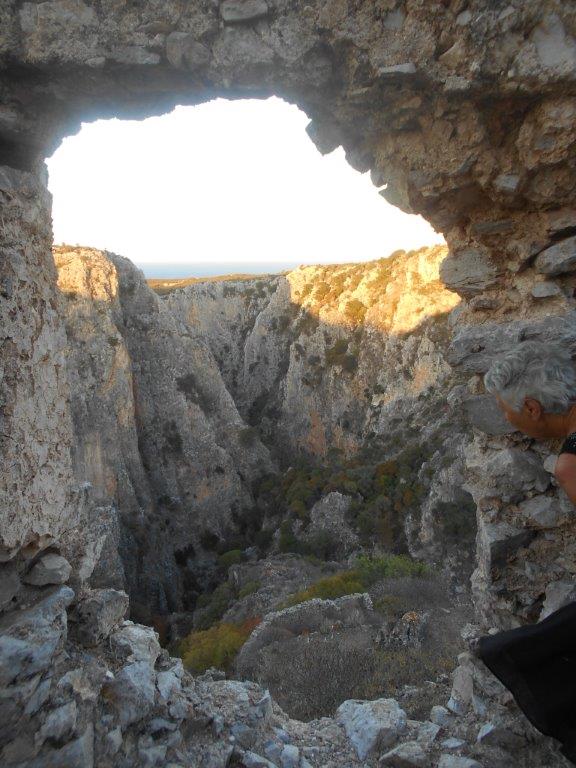
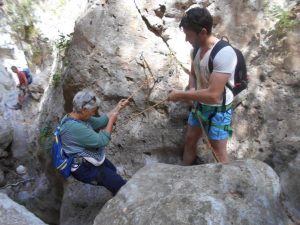
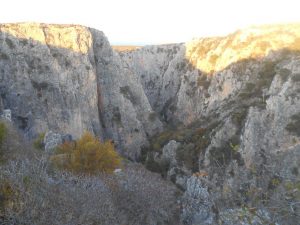

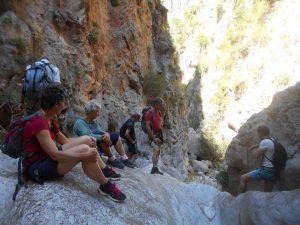
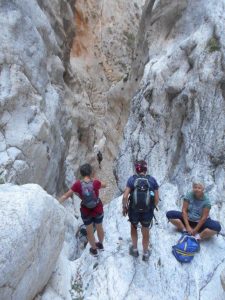
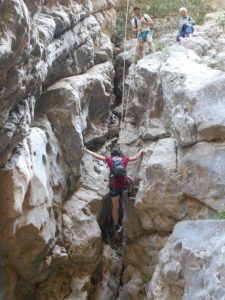
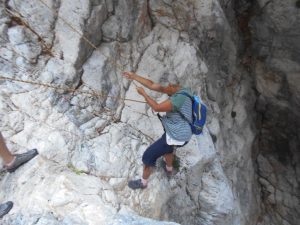
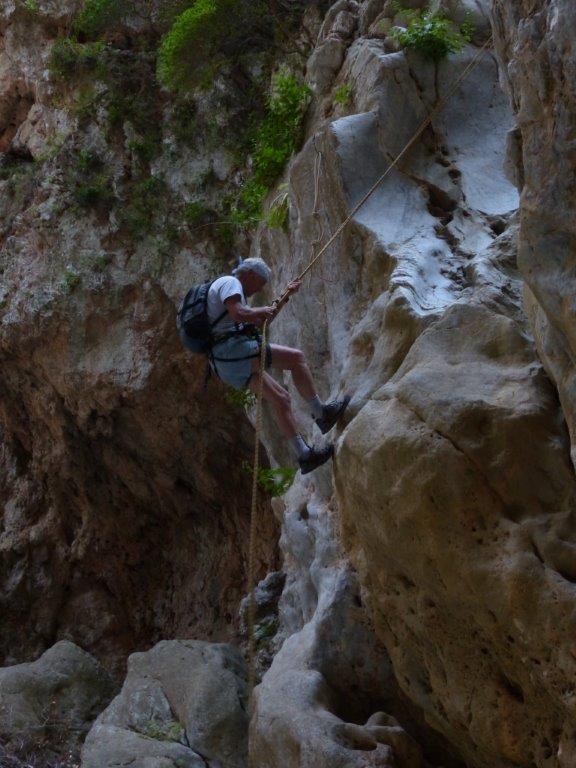
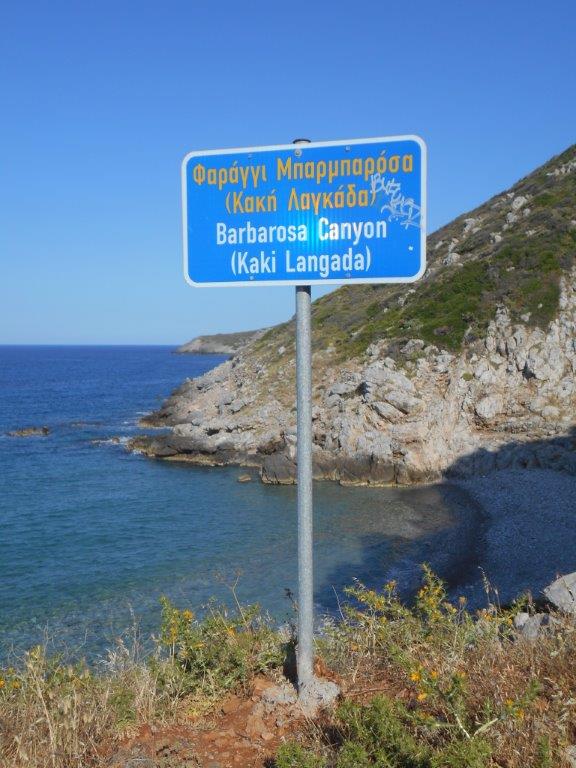

Recent Comments